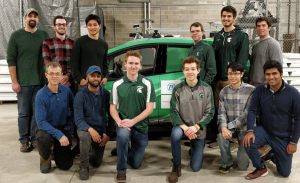Dec 2021 @ Golden Gate Bridge
Sr. Software Engineer @Rivian
Co-CEO @Silicon Valley Koreans, Inc.
Co-Founder & CEO @Stealth Startup
Click here to learn more about Jay
Jay recently moved to the Bay Area from Michigan, driven to turn his dreams into action. He is currently contributing to the development of self-driving technology, combining his engineering expertise with a passion for building the future of mobility. His goal is to develop innovations that enhance safety, efficiency, and connectivity on the road.
In parallel, Jay is leading Silicon Valley Koreans (SVK) , a nonprofit charitable organization 501(c)(3), dedicated to fostering a strong and supportive Korean community in the Bay Area. Through SVK, he focuses on empowering individuals, nurturing meaningful relationships, and inspiring people to grow beyond challenges.
Jay is also actively working on tech startup projects, building solutions that tackle real-world problems through innovation. By aligning his nonprofit mission with his entrepreneurial vision, Jay is working toward a future where technology and community uplift one another—creating lasting impact both socially and technically.
FEATURED WORK:
AUTONOMY SOFTWARE
At Rivian, I work as a Senior Software Engineer on the autonomy team, where I focused on advancing autonomy algorithms and simulations for the R1 and R2 vehicles softwares. My role involved enhancing the vehicle’s self-driving capabilities, ensuring robust performance in various scenarios, and contributing to the overall development of Rivian’s cutting-edge autonomous technology
AD/ADAS ALGORITHM & SIMULATION
At Faraday Future, l served as a Staff Software Engineer, having laid foundation of ADAS/AD Algorithm Simulation activities, SiL, MiL, HiL, etc, leading machine learning, ROS2, Sensor, algorithm performance testings of vehicle software and helping with all AD/ADAS support, safely delivering the company’s flagship product FF91 into the market, upon successful product launch: FF 91 Final Launch & Faraday Future 2.0 Event | Faraday Future | FFIE
 AUTONOMOUS DRIVING ALGORITHM & SIMULATION
AUTONOMOUS DRIVING ALGORITHM & SIMULATION
At Aptiv, I worked as a lead developer of algorithm simulation projects, named 2020 Aptiv Innovation Hall of Fame Team Award Finalist with CEO recognition upon successfully developing and delivering an in-house innovative work to Tier 1 OEM customer as a project lead, subsequently bringing multi-year ~$ Million worth contract from the ground up. A few projects as a lead have been featured in the public media as a demo:

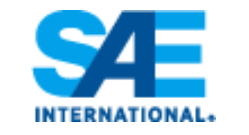
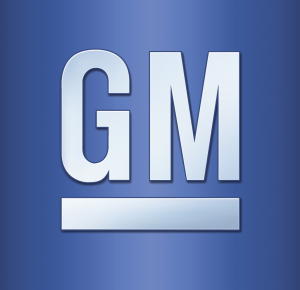
AUTODRIVE CHALLENGE


In AutoDrive Challenge™, I led the Simulation team for perception/control algorithm validation and implementing LiDAR processing algorithm including multi-LiDAR fusion with heavy use of ROS, PCL, C++, MATLAB/Simulink, and etc. Our team placed 2nd in concept design event and 1st in technical reports at year 2 competition.
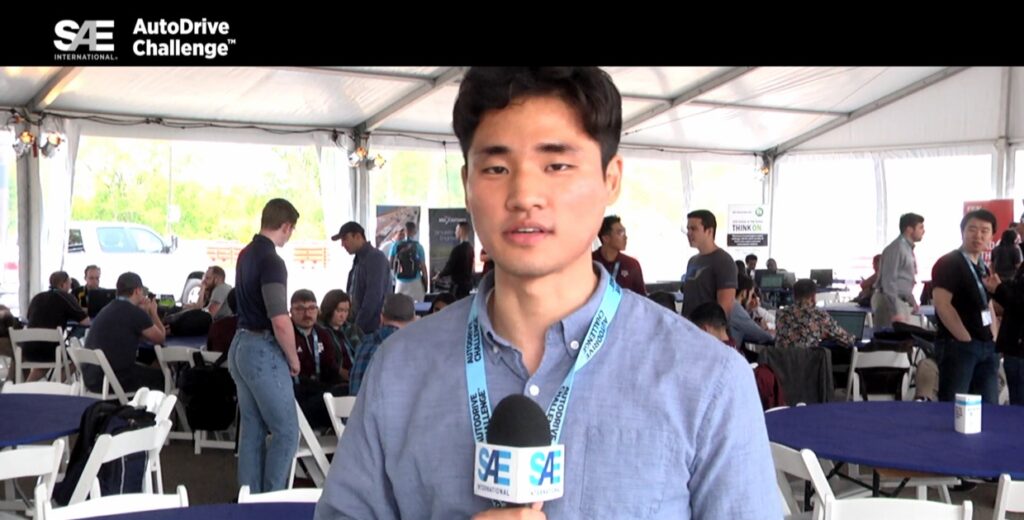

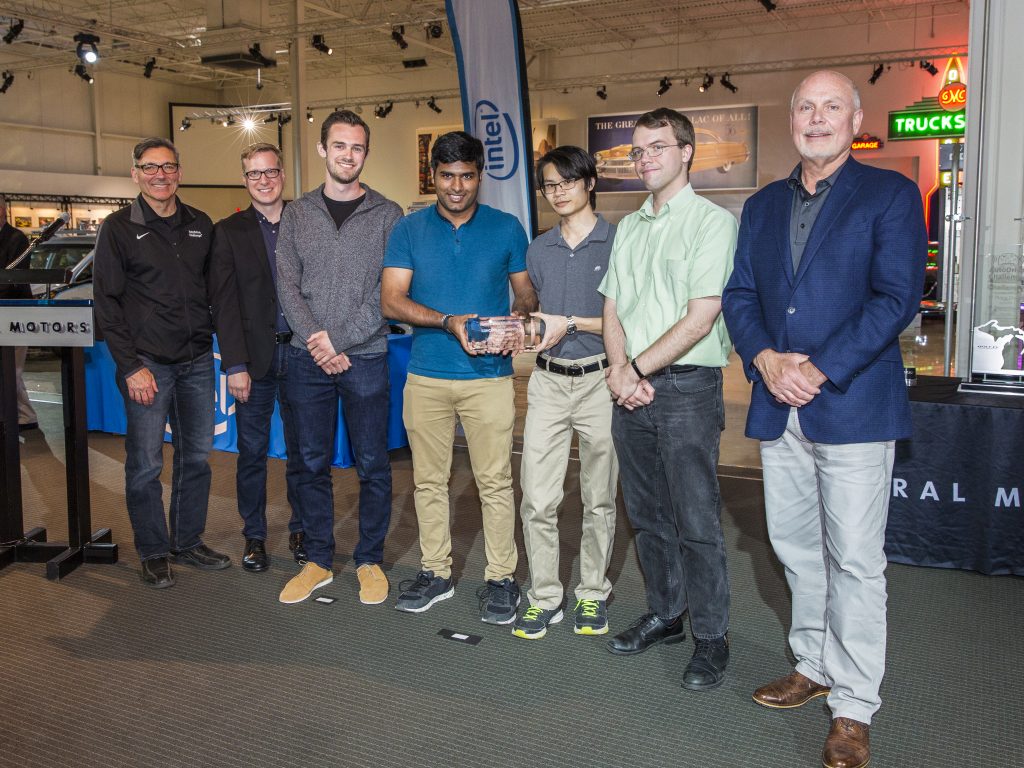



SELF DRIVING CAR ENGINEER NANODEGREE
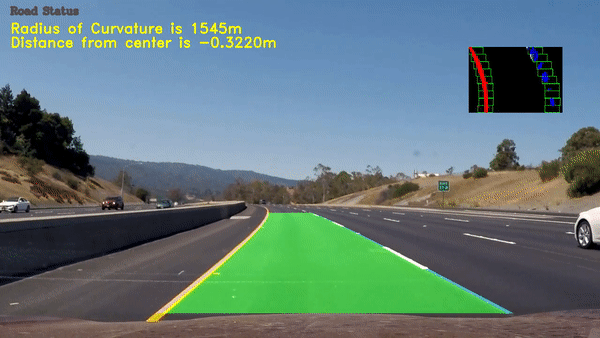
Advanced Lane Line Finding Algorithm
• Developed a robust lane finding pipeline, further refining the lane finding pipeline from the previous project. Since the basic lane finding had its limit when encountered with road curvatures, polynomial line plot is introduced to replace linear line plot. In addition, further image processing is included to filter the image to get the better lane finding result, and it starts from camera calibration. The techniques used in this project include:
* Camera Calibration
* Advanced image processing
* Perspective Transform
* Histogram based lane finding
* Polynomial extraction
* Lane curvature and offset finding

Traffic Sign Classifier with LeNet5 CNN
• Explored techniques and knowledge in deep neural networks and convolutional neural networks to classify traffic signs. Structure of the flow includes training a model, decode traffic signs from natural images by using the German Traffic Sign Dataset, testing the model program on new images of traffic signs found on the web. The trained model from this project showed a satisfying performance with the following result:
LeNet CNN structure proposed in Gradient-based learning applied to document recognition. Proceedings of the IEEE, November 1998, was used.
Techniques used:
* CNN architecture development in TensorFlow

Localizing Kidnapped Vehicle – 2D Particle Filter
• Developed and applied 2-D dimensional particle filter- The filter is given a map and some initial localization information (analogous to what a GPS would provide). At each time step the filter will also get observation and control data. It focuses on finding a system where it is randomly transported to a new location and with GPS estimate of its initial condition, sensor, and control data, it should localize itself and find out its path along.
Techniques used:
* Localization – Particle Filter
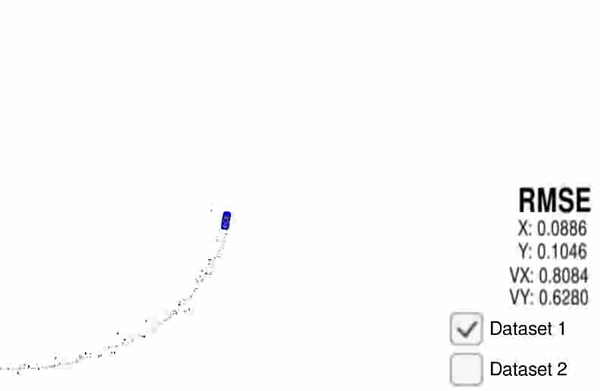
Fusion Track State Estimation – Extended Kalman Filter
• Applied extended kalman filter to estimate the state of a moving object of interest with noisy lidar and radar measurements. RMSE values are obtained and evaluated for filter acceptance criteria.
Techniques used:
* Sensor Fusion – Extended Kalman Filter
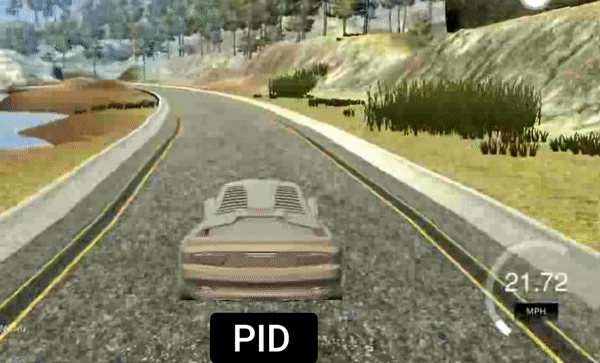
Steering Input Prediction and Control – PID Control
• Implemented PID controller, controlling steering value based on CTE(Cross Track Error) returned from each simulation cycle.
Techniques used:
* Controls – PID Controller
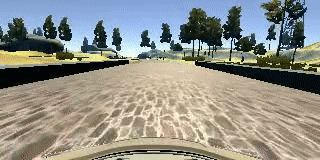
Steering Input Prediction and Control using Behavioral Cloning with NVIDIA’s end-to-end CNN
• Developed a steering controller with CNN, of a simulator vehicle autonomously going around a track, with NVIDIA’s Deep Learning CNN model in End-to-End Deep Learning for Self-Driving Cars[Bojarski, etc] in 2016. Steering output is predicted through the CNN using three simulation camera images. Overall, it showed a satisfactory performance with low cost function value for the cross-validation data.
Techniques used:
* Behavior Cloning – Keras / TensorFlow-backend
* CNN performance validation on NVIDIA’s End-To-End Deep Learning CNN and LeNet CNN

Automated Lane Change Algorithm – Highway Path Planning
• Designed a path planner so that the host vehicle is able to drive at least 4.32 miles without incident while the car does not exceed a total of 10 m/s^2 and a jerk of 10 m/s^3, obeying 50 mph speed limit. The path planning algorithm is tested under the highway driving condition with all vehicles except the host being autonomous in the Udacity’s driving simulator. The simulator runs at 50 freq and works by feeding in host vehicle’s projected position points in global.
Techniques used:
* Path Planning – Lane Change algorithm design

System Integration
• Integrated traffic light classifier, auto stop/start maneuver and smooth lane following algorithm on CARLA simulator car under various traffic conditions.
Techniques used:
* Development environment – ROS, CARLA simulator
* Perception – traffic light classifier -ssd_mobilenet_v2 model
* Path Planning -waypoint follower
* Controls – steering/speed PID controller
Robotics, Machine Learning & AI
In pursuance of my M.S in Computer Science degree at Georgia Tech, a list of courses taken and projects related to robotics, machine learning and AI are listed below, while a few of the highlighted projects are featured here.
– Machine Learning for Trading
– Robotics: AI Techniques
– Machine Learning & Data Science Tools
– Advanced topics in Software Analysis
– Advanced topics in operating systems
– Human-Computer Interactions
– Video Game Design
– Knowledge-Based Artificial Intelligence
this AI agents, ray tracing, 3D geometry, animations, graphics, sensors, and dynamics concept utilized game with Unity is designed by our talented team members in the course. I’d love to hear some feedback to improve this little game 🙂 the game can be played in the following link: ParkourSmash


